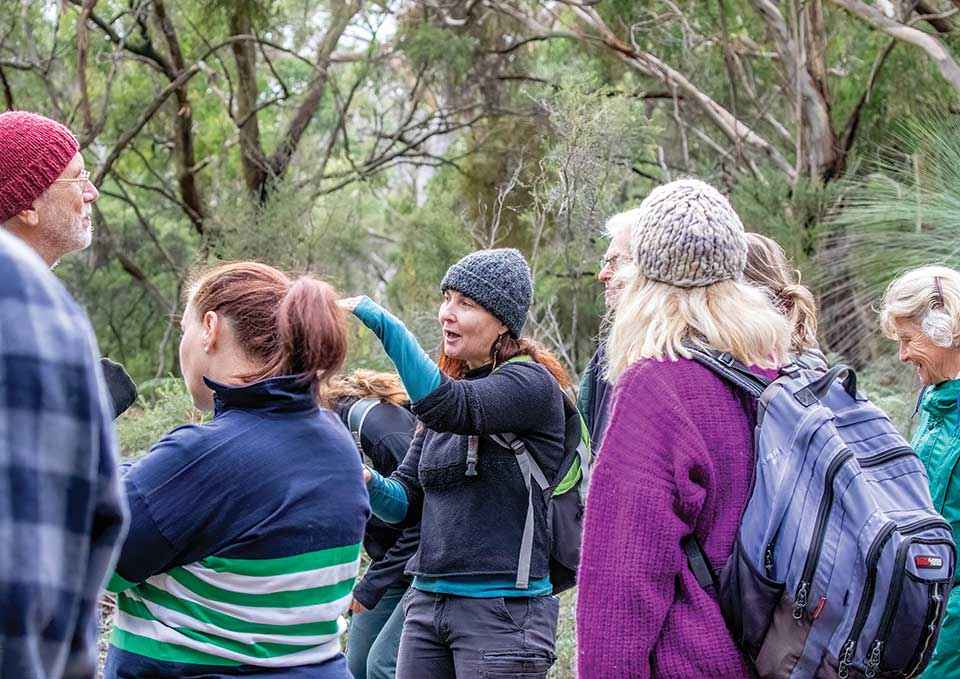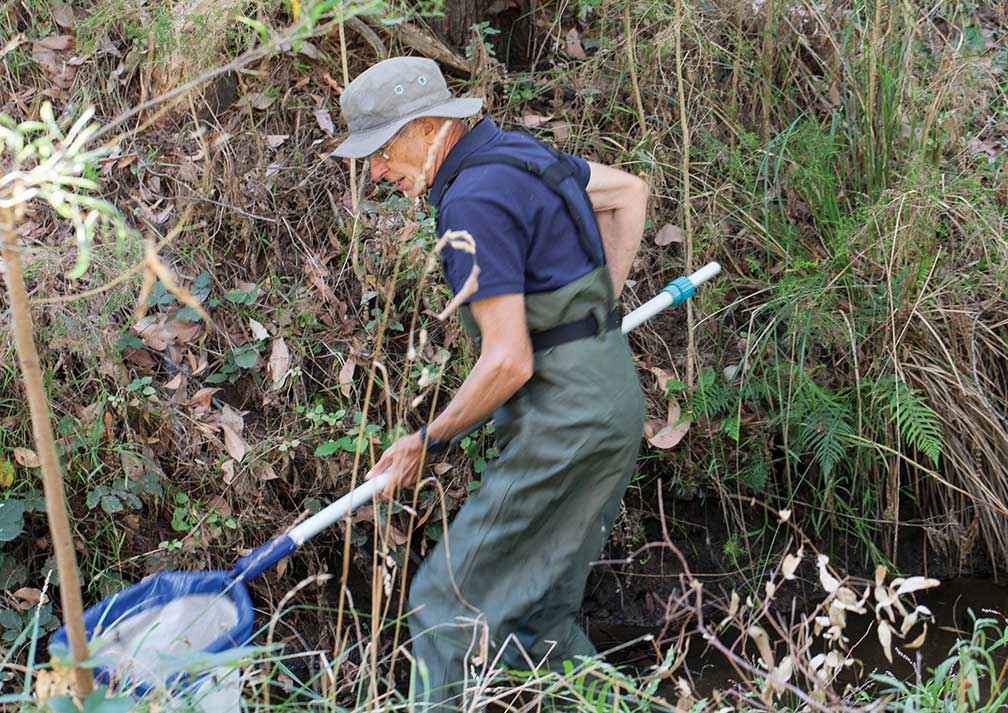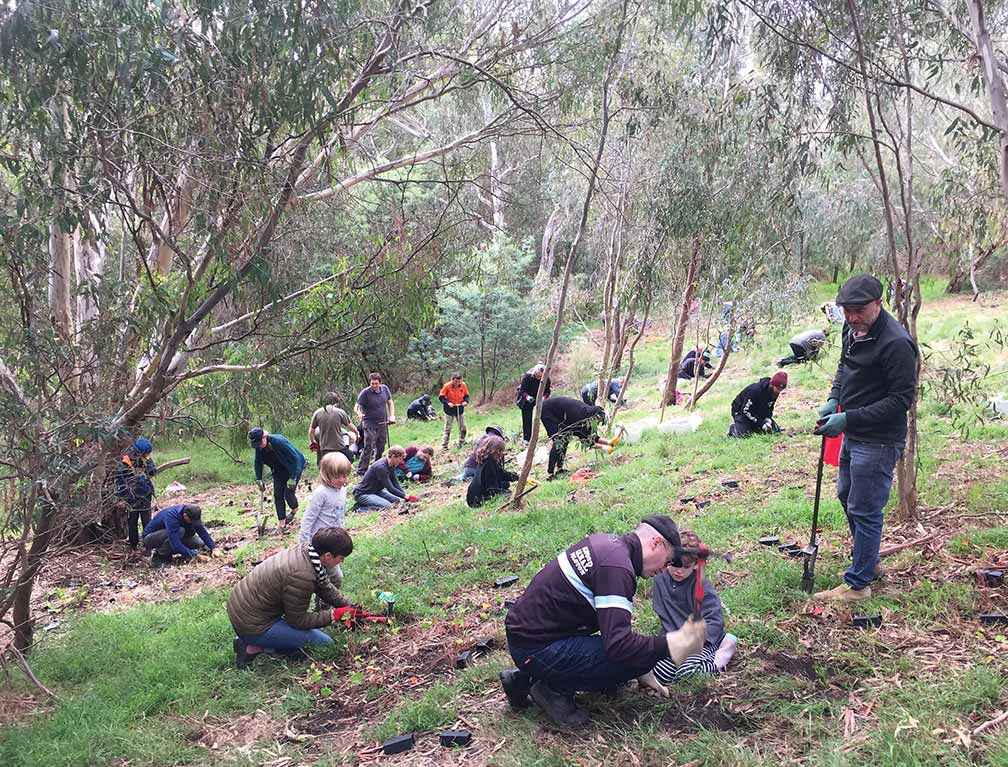Victorian Landcare Magazine - Winter 2024, Issue 87

As the umbrella organisation for 13 Landcare groups and other affiliated environmental volunteer groups, the Mornington Peninsula Landcare Network (MPLN) has a huge responsibility.
The network, which marked its 10th anniversary last year, operates in a richly biodiverse green wedge, across 750 square kilometres and 10 catchment areas within Mornington Peninsula Shire. Its mission is to protect and enhance the Mornington Peninsula’s unique environment by promoting responsible land stewardship, working mostly with private landholders, but also undertaking some projects on public land.
Secretary Peter Scott said the impetus for establishing the network was the opportunity to secure government funding for a Landcare facilitator, a role held by Jacqui Salter from 2012 to 2020 when Chantal Morton joined MPLN.
“We thought that if we banded the Landcare groups together on the peninsula that would make it easier for us as a combined group to then get one of these funding positions. The network’s there to help the groups, help them work together, apply for grants, and help them with governance,” Peter said.
MPLN’s five main areas of focus are: reconnecting habitats, protecting soil and water, controlling pest animals, managing weeds, and preventing inappropriate clearing of native vegetation. A major project spanning the past decade, Linking the Mornington Peninsula Landscape was funded by a grant from the Natural Resources Conservation League.
The network has since been able to implement 10 biolink plans across the Mornington Peninsula with funding from various sources, including the Victorian Government, Port Phillip and Westernport CMA, Melbourne Water, and Mornington Peninsula Shire Council. This has helped reconnect fragmented remnants of native vegetation to create wildlife corridors, or biolinks, in each of the region’s catchment areas, allowing safer passage for mammals, marsupials, reptiles and birds.
The network’s flagship biolink project, the Greens Bush to Arthurs Seat Biolink, with its focus on revegetation, weed control and strategic fencing, is creating a corridor across private properties between the two largest core patches of remnant vegetation, Mornington Peninsula National Park and Arthurs Seat State Park. These landscape-scale links will benefit numerous threatened species, including powerful owls and swamp skinks. This project has received major funding from DEECA, Melbourne Water and other sources.
According to Peter, large swathes of the peninsula had been cleared in the past for farming, but since land values had risen, many areas have been subdivided into smaller farms and lifestyle blocks. This fragmentation has contributed to declines in native species due to habitat loss and predation by feral animals.
Workshops to encourage better stewardship by landholders have been run on a range of topics, including plant identification, rabbit control, integrated pest management, and whole farm revegetation planning for
biodiversity, productivity and climate change.
To date, the network has engaged with 105 private landowners and contributed to almost 300 hectares of weeding and revegetation works. More than 22,000 native trees and shrubs were planted in 2022–2023.
The newest program, Meet Your Bushland, links landholders with a local bushland restoration specialist and a member of their local Landcare group.
They do a walk and talk on the property together, concentrating on areas with the highest habitat values, then visit another property to see what successful restoration works look like. The program was based on lessons from Linking the Mornington Peninsula Landscape, a project which highlighted the effectiveness of one-on-one, on-site interactions between landholders and bushland restoration specialists.
With about 600 member families, the network actively engages the community through monthly e-newsletters – with a readership of about 1000 people – social media, and local newspapers and newsletters. Property owners are also contacted by door knocking and letters, and emails are sent to businesses, schools and community groups. The Greens Bush to Arthurs Seat Biolink and National Tree Day events have attracted more than 1000 volunteers.

Above: Jeff Carter conducts a WaterWatch survey at Baldry Crossing.
Despite challenges in engaging landholders and finding experienced project coordinators, the network has successfully implemented biolink projects by securing landholder commitment through demonstrating both the productivity and environmental benefits and securing partial landholder funding.
For example, the Greens Bush to Arthurs Seat Biolink project introduced a 10 per cent financial contribution requirement from participating landholders, who also signed a formal agreement committing to maintaining areas of on-ground works for five years.
This approach has been well-received. The contribution has since been raised to 20 per cent and adopted across all biolink projects.
Collaborations have been essential for the network, with strong partnerships developed with Mornington Peninsula Shire Council, Parks Victoria, Port Phillip and Westernport CMA, Melbourne Water, Western Port Biosphere Foundation, local schools and TAFEs. Our Songlines tree planting events were held during NAIDOC Week in 2022 and 2023. The peninsula’s Women in Business group also has been involved in working bees and planting days.
MPLN has made significant strides in reconnecting and restoring habitats through establishing biolinks in each catchment area. It supports member Landcare groups in conserving native vegetation and fauna, advocating for sustainable land management, and influencing policy issues. The projects focus on biodiversity enhancement through pest and weed control, educational initiatives, and raising Landcare’s profile on the Mornington Peninsula.
Merri Creek Management Committee (MCMC) has been bringing together volunteers from all over the Merri Creek catchment in a community effort to restore and conserve indigenous biodiversity for more than 35 years. From litter collection to bird diversity monitoring, water quality assessments, on-ground plantings and weeding, MCMCs stewardship of the creek has brought significant environmental, social, cultural, and economic benefits. The activities of MCMC are made possible through the tireless ongoing contributions of thousands of community volunteers. During 2021–2022, despite lingering impacts from COVID-19, 1000 volunteers contributed more than 3000 hours to habitat restoration and protection in the catchment and MCMC delivered 333 education events connecting with 6775 people across the catchment.

Above: A Merri Creek Management Committee Mothers’ Day planting in 2022.